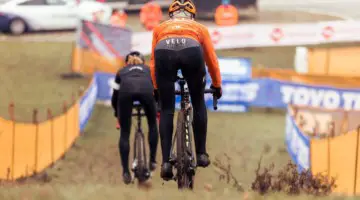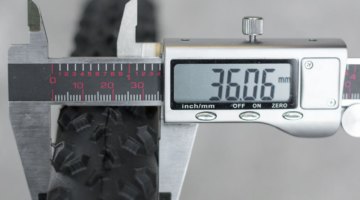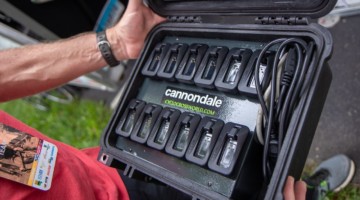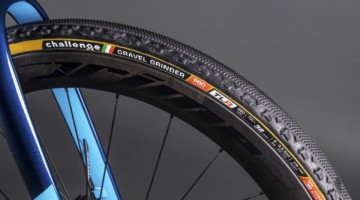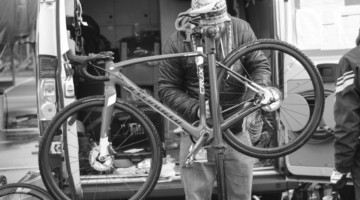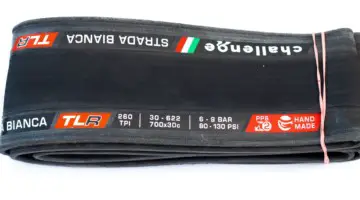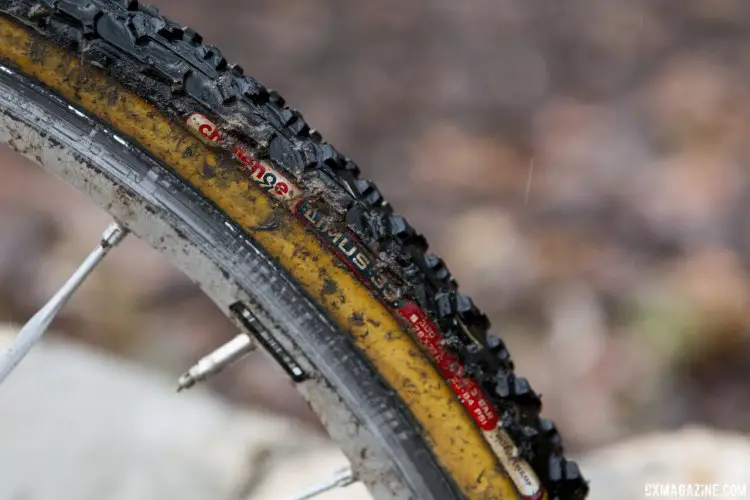
Getting a head start on picking up tubular tires can pay dividends on the lifetime of the tire. © Cyclocross Magazine
In Issue 28, our CXM Labs was resurfaced to test the actual suppleness of tires, including many different kinds of tubulars with high thread counts. While you can find the detailed results of many brands by ordering your backcopy today, which is also available on Uberflip, in the App Store on iTunes, and on Google Play for Android, we can say that labels such as handmade and high tpi did not directly correlate to a more supple tire.
With less than 100 days to the start of cyclocross season, we wanted to resurface an older but timely piece on another factor to consider about the suppleness of tubulars: buying them early before the season so they have time to properly age. April was more of the ideal time to pick up your favorite models, but now is still a great time to get a head start for the season. Of course, if you don’t feel properly motivated to go through the full motions for cyclocross tubular tires, you might be better off taking a look at our prior Mechanical Monday about the 14 facts of setting up and riding tubeless tires for the season.
If you’re planning on ordering some new tires for gravel racing (like Challenge’s Almanzo or Eroica, reviewed here), you might want to also order your cyclocross tubulars. Why? Like fine wine and cheese, tubulars benefit from the aging process. Emily Zinn of Challenge Tires shared some insight into why tubulars can benefit from aging, and how to store them while they’re getting old.
The first thing Zinn wants you to know is that all tubulars are not created equal. While a handmade tire may cost more, there are reasons for that. Good reasons. Ultimately, Zinn explains, the major difference between handmade tubulars or open tubulars and the majority of clinchers and some tubulars is that they avoid the heat and pressure process called vulcanization, which most tires undergo in production. The process is used to bind the materials, but compromises the ride quality when the rubber gets tougher and dried out, making casings less supple.
Handmade tires are often made from raw, natural materials rather synthetic. In fact, Zinn even notes that the Challenge factory in Thailand is able to use naturally-sourced natural latex rubber without having to add petroleum for transport.
We don’t have to explain to you why this is important. Any tire geek can tell you that supple casings are of particular importance to us cyclocrossers who prefer to ride super low pressures. “You don’t want a tire to buckle and fold when running a low PSI,” Zinn says.
So what does that mean? Buy a handmade tire like a Challenge, FMB or Dugast tubular and you’re good to go, right?
Not quite. What that means is those handmade, non-vulcanized tires that have been hand-glued with cold adhesives need time for the bonds to strengthen. They have already been factory-aged, but will continue to get stronger for the following six to eight months. The quality and durability of a tread made from natural rubber will also improve over the first months, so you can get the most longevity from your tires if you buy them at the end of one ’cross season and hold onto them for the next one (and hope that a fancy new tread isn’t released in the interim). Start aging now, and you’ll have stronger tires that may get you through even the harshest ’cross season. Of all the sports, cyclocross is one of the least kind to tires: between mud pits, pressure washers, and at least twice weekly scrub-downs, the glue on your tubulars, and the tires themselves, get put through the paces with startling regularity. If buying tires earlier on gets more wear and tear out of them, what are you waiting for?
Added bonus: spend that money now, and you may not find yourself scrambling to explain other high costs (like busted wheels or shifters) during the season to your significant other or credit loan officer.
However, that doesn’t mean you should spend next weekend getting out the glue. Save the gluing for when the season starts. All you want to do is store them as the materials age. Zinn adds, “Treat them the same way you would if storing unused tubulars from the previous season — ideally in a dark, dry, room-temperature spot where they can be lightly inflated on their sides.”
Why store exactly like that? “Ideally, rest it on its side partially inflated, inflating every month or so as it loses air through the semi-permeable membrane,” Zinn explains. This way, it holds its shape so when you do start gluing, you don’t have to reshape the tire. To that end, absolutely do not leave them folded in a box somewhere. Not all of us have the storage room to leave tires partially inflated lying on their side, but that’s the ideal, and better than hanging on a hook. Another option would be to keep them mounted on an old rim, partially inflated.
So, with cyclocross season only three months away, it might be time to take stock of what tires you’ll need, and get an order in now. An added bonus: often, those who wait until the last minute to purchase tires start seeing their favorite options run out as the popularity of cyclocross increases.























